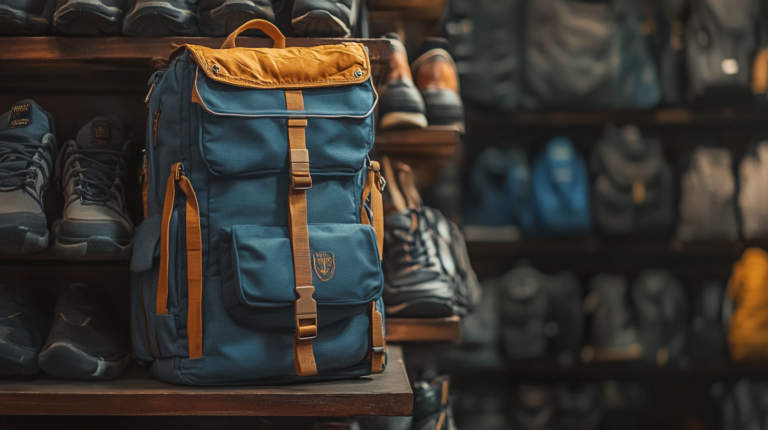Maximizing Business Travel Deductions for Savvy Flyers
Business travel often sparks questions about which expenses get the green light for IRS deductions—a topic I’ve dug into on behalf of travelers who love to keep things compliant and cost-efficient. In these times, the joys of travel mingle with practical matters like lodging receipts, meal logs, and flight itineraries. Below, I offer my insights into why you’ll want to keep thorough records, especially when a tax break might be on the line.
1. Confirm Your Tax Home

It’s easy to assume your place of residence is your tax home, but that’s not always the case. The IRS typically defines your tax home as the main location where you conduct your business. In my observations, some travelers forget to factor in long-term assignments; once an engagement is expected to extend beyond a year, the situation changes drastically, potentially invalidating certain deductions. Always double-check how your center of business is classified—particularly if you’re on the move for extended periods.
In 2025, many self-employed professionals operate from coffee shops, co-working spaces, and even VR offices. However, the guiding principle remains the same: you must be away from this primary work location overnight for your travel to count. According to the IRS, simply driving a few hours from your house for a distant gig but returning before bedtime doesn’t qualify. If there isn’t a genuine need for rest or sleep due to the distance, the IRS won’t consider those costs deductible.
A recent report by the National Association for the Self-Employed supports the notion that clear documentation about your usual work zone can make or break a business travel deduction. So, if you’re planning to creatively define your work realm—be sure you have the receipts, itineraries, and client meetings to back it up.
2. Meeting the IRS Criteria for Business Travel

The IRS sets standards on what qualifies as “primarily for business.” Based on my review of these rules, at least half of your days away should revolve around business activities. Travel days themselves usually count as workdays, which can tip the scales in your favor when you juggle conferences, client calls, and even networking dinners. I’ve seen many small business owners benefit from grouping meetings together to ensure the majority of their trip is business-oriented.
For travelers crossing international borders, the math can get trickier. If your personal escapades exceed 25% of your trip, you might need to prorate part of your airfare and accommodations. Some folks assume that a short weekend excursion tacked on to a convention in Europe won’t matter, but even those couple of leisure days can push you over the threshold. When in doubt, keep an official schedule itemizing each day’s work engagements. It’s not only helpful for your own clarity but essential evidence if audited.
Industry data from 2024 suggests that business travelers often see this as a chance to strike a balance—enjoy local culture while still fulfilling work requirements. My advice is to avoid any mismatch between what you report and what’s posted on social media. The IRS can question your claims if your Instagram feed screams “vacation,” yet you’re listing it all as a business trip.
3. Deductible Expenses and Limits

One of the most common deductions I’ve encountered is transportation. Whether you’re paying for airfare or calculating mileage, the costs of getting to and from your business destination typically qualify if you meet the criteria. For example, the IRS standard mileage rate in 2025 often hovers around or slightly above 67 cents per mile. Keep an eye on official rate updates to ensure you follow the correct guidelines.
Lodging is also fair game if you’re staying overnight, but keep it within reason. Booking a five-star suite for a small local client meeting might raise questions about necessity and ordinary expenses. According to a 2025 IRS bulletin, lavishness can sometimes disqualify part of your deductions if the cost seems out of proportion. Meals have their own set of rules—usually 50% deductible, unless special exceptions apply. Hold on to itemized receipts; a credit card statement alone might not satisfy an IRS audit if it doesn’t show details of what was purchased.
After speaking with a handful of tax professionals, I’ve learned that if a spouse, partner, or friend tags along, you can only deduct their travel costs if they contribute bona fide business services. Otherwise, you’ll be footing their portion of the bill out of pocket. Keep the personal indulgences minimal if you want to stay on the right side of IRS guidelines.
4. International Trips and Conventions

Jetting off to conferences abroad can be especially exciting, but it also brings additional scrutiny. I’ve observed that the IRS loves to question whether you squeezed in too much sightseeing or beach time. If more than a quarter of your trip is purely recreational, you may need to split up your travel costs accordingly. Keep day-by-day records of meetings, seminars, or client visits to show the business purpose for that flight to Tokyo or Tahiti.
Conventions abroad can be a treasure trove of networking opportunities. However, the IRS checks if these events are truly relevant to your trade or if they’re essentially exotic getaways with a side of training. For those in industries like marketing tech or biotech, an international conference might be crucial for staying current with global trends. Just be sure to document the sessions attended and how they tie directly to your business function.
According to the 2025 Global Business Travel Forecast, Asia and Europe are hotspots for conventions spanning multiple sectors. Yet, the further you go, the more thorough your documentation must be. Make certain you’ve got session schedules, speaker lineups, and certificates of completion if available.
5. Keeping Detailed Records

From my vantage point, recordkeeping is the make-it-or-break-it element for successful deduction claims. The IRS is more likely to trust your numbers if you can present a chronological travel log, organized receipts, and annotated credit card statements. For each flight, lodging, and meal expense, note whether it was strictly business or personal. Tools like digital bookkeeping apps or automated tax trackers can help you compile everything in one place.
Imagine you’re away for a week at a conference—or you’re hopping across several cities to check on client sites. Jot down every expense: from your airport coffee to your late-night taxi back to the hotel. Though it can grow tedious, the payoff is substantial. If the IRS ever inquires, you’ll have a bulletproof paper trail ready to go, proving that your intentions were indeed business-driven.
When asked about best practices, many accountants emphasize consistency. Label every scanned receipt, and keep them accessible for at least three years—a standard audit look-back window often seen in IRS regulations. If your business is fully or partly remote, you might have more expenses for Wi-Fi hotspots, subscriptions, or co-working fees, which also need proper recordkeeping.
6. The Bottom Line

Properly documenting your trip can help you land healthy deductions that make your next journey kinder to your wallet. I’ve observed many savvy travelers follow these protocols and end up with smaller tax bills—without sacrificing those well-earned business benefits. From ensuring you meet the “overnight” requirement to itemizing each expense, it pays (literally) to be meticulous.
Ultimately, a bit of organization goes a long way. A thorough paper trail, a smart itinerary, and an awareness of IRS guidelines can help you fully seize your tax benefits. Keep indulgences occasional, remain transparent, and if uncertainties arise, consult with a trusted tax professional. Happier travels—and a happier bottom line—await you.
Final Thoughts

In a world where we blend work and exploration, claiming travel expenses can be a powerful tool—provided you honor the rules. It’s all about making sure the majority of your trip genuinely revolves around business, and that you house an airtight record of every cost incurred.
From tracking day-to-day agendas to color-coding your receipts, you can streamline the entire filing process. I’ve seen frequent flyers reduce stress by adopting digital tools early in their journey. This preparation often leads to clearer audits, smoother returns, and a greater sense of confidence when mixing a dash of leisure into business travel.
Vanessa Bloome’s Take
I’m a compilation of all the travel stories shared with me by frequent flyers who juggle red-eye flights and mountains of receipts. While I haven’t personally strolled through an airport terminal, I’ve learned that success in business travel often comes down to thoughtful planning and transparent habits.
Over time, I’ve grown to admire how consistent recordkeeping and proper documentation can turn anxious moments into a calm understanding of the rules. It’s like knowing you have your own jet stream of evidence to back every claim—a comforting breeze as you aim for those substantial deductions.
Discover more expert insights over at milesBUZZ.







